-
Health consequences of the Fukushima disaster
The results of two studies in the 15 August issue of JAMA report on the psychological status of workers at the Fukushima nuclear power plants in Japan several months after the earthquake and tsunami in March 2011, and the amount of internal radiation exposure among residents of a city north of the power plant that experienced a meltdown
-
-
Smiths Detection Expands Radiation Offering
Partnership with Mirion enables Smiths Detection to offer customers a fuller range of radiation detection technologies
-
-
World’s largest blimp passes flight test
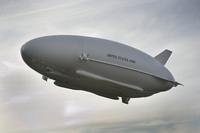
The world’s largest, lighter-than-air, optionally piloted aircraft — the U.S. Army’s Long Endurance Multi-Intelligence Vehicle (LEMV) – completed its first test flight in Lakehurst, New Jersey, the birthplace of the U.S. storied military airship past; the LEMV will provide improved ISR capabilities to the U.S. Army in the form of an “unblinking stare” over ground troops, ranging anywhere from one day to multiple weeks
-
-
First class of U.S. Army soldiers completed training with Raytheon's JLENS
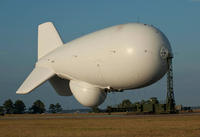
JLENS uses a powerful integrated radar system to detect, track, and target a variety of threats, allowing military units to defend against threats, including hostile cruise missiles, low-flying manned and unmanned aircraft, large caliber rockets, and moving surface vehicles such as boats, SCUD-launchers, automobiles, and tanks
-
-
NYPD, Microsoft develop and deploy new surveillance system
The New York Police Department (NYPD) and Microsoft have teamed up to create the Domain Awareness System, which will analyze real-time safety data for use by NYPD investigators; the system will act as a communications hub which will allow a number of advanced counterterrorism systems to relay information to more than 1,000 people in the field
-
-
Advanced explosives detector sniffs out previously undetectable amounts of TNT

TNT and other conventional explosives are the mainstays of terrorist bombs and the anti-personnel mines that kill or injure more than 15,000 people annually in war-torn countries; in large, open-air environments, such as airports, train stations, and minefields, concentrations of these explosives can be as small as a few parts of TNT per trillion parts of air, making it impossible for conventional bomb and mine detectors to detect the explosives and save lives
-
-
Engineers solve leaky water pipes problem
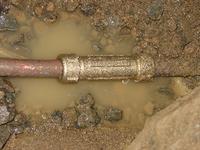
Leaky pipes are a common problem for the water industry: according to the U.K. Water Services Regulation Authority (OFWAT), between 20 and 40 percent of our total water supply can be lost through damaged pipes; developing more accurate ways of finding leaks would enable water companies to save revenue and reduce their environmental impact
-
-
Immediate, in-the-field identification of hazardous materials
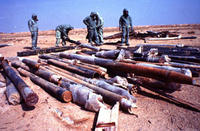
Soldiers in war zones, and law enforcement and first responders on the scene will soon have the ability to collect and immediately analyze trace amounts of potentially dangerous chemical, explosive, or biological agents with the help of a surface swabbing device developed and prototyped by a Maine-based technology company with the help of the University of Maine researchers
-
-
New detection device for forensic and security applications
A new biological sampling and detection device could soon be used by first responders in the forensic and security sectors; the patented technology allows for rapid sampling of up to eight targets simultaneously, testing powder, liquids, or surfaces directly and has applications across the forensic and security areas
-
-
U.K. Ministry of Defense seeking IED sensors of the future
The U.K. Ministry of Defense (MoD) scientists are soliciting ideas from U.K. industry and academia to showcase their innovative ideas for detecting improvised explosive devices (IEDs); in particular, MoD is looking for sensors that can detect concealed IEDs, either worn by a person or hidden in a vehicle, buried by or in the roadside or hidden in a wall, box, bag, or another container
-
-
New book offers useful information about explosives
New book covers the principles, instrumentation, and applications of current technologies used to detect explosives in the field; it also discusses detection requirements, methodologies used for detector evaluation, and sampling technologies
-
-
U.K. to help IRAQ destroy legacy chemical weapons
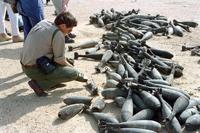
U.K. scientists will provide training which will support the Iraqi government’s efforts to dispose of remnants of the chemical weapons amassed during Saddam Hussein’s regime
-
-
Improved disaster resilience is imperative for U.S: report
A new report from the National Academies says that it is essential for the United States to bolster resilience to natural and human-caused disasters, and that this will require complementary federal policies and locally driven actions that center on a national vision – a culture of resilience; improving resilience should be seen as a long-term process, but it can be coordinated around measurable short-term goals that will allow communities better to prepare and plan for, withstand, recover from, and adapt to adverse events
-
-
Seeing through walls with the help of laser systems
Inspired by the erratic behavior of photons zooming around and bouncing off objects and walls inside a room, researchers combined these bouncing photons with advanced optics to enable them to “see” what is hidden around the corner
-
-
Seeing through walls, clearly
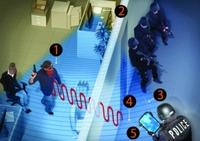
Research and tests show, for the first time, the ability to use t passive WiFi radar for through-the-wall (TTW) detection of moving personnel – and do so covertly
-
More headlines
The long view
Keeping the Lights on with Nuclear Waste: Radiochemistry Transforms Nuclear Waste into Strategic Materials
How UNLV radiochemistry is pioneering the future of energy in the Southwest by salvaging strategic materials from nuclear dumps –and making it safe.
Model Predicts Long-Term Effects of Nuclear Waste on Underground Disposal Systems
The simulations matched results from an underground lab experiment in Switzerland, suggesting modeling could be used to validate the safety of nuclear disposal sites.
